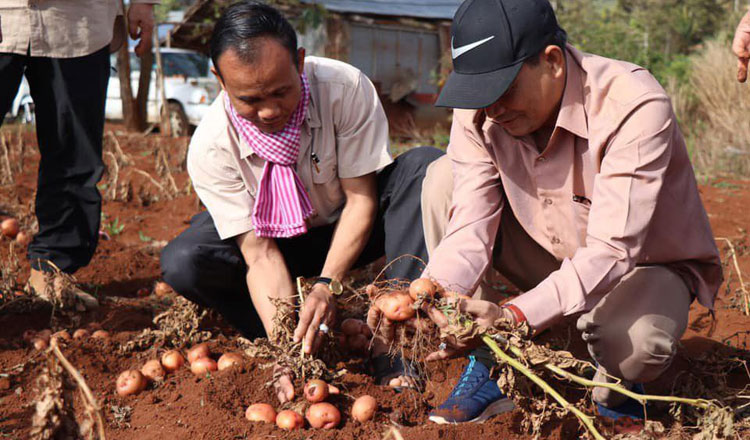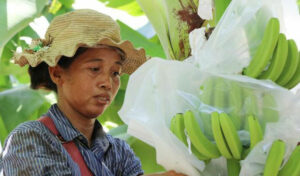Green project to spur bio and economic diversity in Prey Lang
 Sou Chi, one of 56 ibis rice producers in Preah Vihear province. Growers of the staple food are able to cash in on prices 40 percent above those paid for competing products. Supplied
Sou Chi, one of 56 ibis rice producers in Preah Vihear province. Growers of the staple food are able to cash in on prices 40 percent above those paid for competing products. Supplied
The legendary forest Prey Lang has given way to agricultural land, resulting in the migration of young Cambodians in search of work and, perhaps most crucially, a degradation of the area’s environment.
“Prey Lang” translated to English means “our forest”. It spans five provinces and is considered to be the largest forest in the country. Prey Lang and the area surrounding it is inhabited by roughly 700,000 people.
However, the lush forestry that served as the area’s namesake is at risk, endangering the livelihoods of those who rely on the natural resources there to sustain their lifestyles.
“[Prey Lang’s] forests are an important asset for the region’s economic growth, for the protection of its culture and nutrition of its citizens and for natural medicines which sustain life,” USAID Chief of Party Sisovann Ouk said.
Ouk said USAID’s $5 million Green Future Activity Cambodia project will help widen waste absorption, water and nutrient cycling, seed dispersal, pollination and controlling pests – all of which will help strengthen the quality of the province’s agricultural output.
The USAID Green Future Activity project works to build the knowledge and skills of citizens and civil society organisations in the use of evidence-based communication supporting biodiversity conservation, forest protection and sustainable natural resources management. The project is funded by the US Agency for International Development (USAID) Cambodia, through ECODIT as the prime contractor.
The project engages a range of audiences and stakeholders at the national level, with an added focus on youth groups in Phnom Penh and other cities, to heighten awareness of environmental issues and promote greater protection for the country’s natural resources.
The promotion of the planting of the renowned ibis rice variety is indicative of USAID’s commitment to preserving the area’s biodiversity, while extending economic opportunities to those who live in the area.
The product is named after the national bird of Cambodia which is indigenous to Prey Lang’s forests but also considered “critically endangered” by the World Wildlife Fund.
USAID’s Greening Prey Lang project supported 56 farmers in growing ibis rice. The organisation imparted farmers with technical know-how, market knowledge, sustainable natural resource management skills and, perhaps more critically, it has helped secure funding for the endeavour.
The highly prized ibis rice is sourced from Preah Vihear province. Sou Chi, 29, from Dang Phlet village, is among 56 growers of the staple food.
Chi and her counterparts received financing after USAID struck a deal with Phnom Penh Commercial Bank to enable participation in the project.
The brand’s organic rice commands 30 to 40 percent higher prices in markets, allowing farmers such as Chi to earn extra income without having to resort to harmful chemicals or pesticides.
Ibis rice’s success can serve as a model for other growers surrounding Preah Vihear province throughout the Prey Lang forest. Despite the province being the Kingdom’s largest rice producer, its rice is not sought after as highly as those in other regions such as Battambang and Preah Vihear provinces.
Rice growers in Prey Vieng province, for example, rely on pesticides and chemicals to grow their rice. The province also suffers from poor soil quality and lacks reliable access to water to irrigate the crops.
This will be increasingly critical for growers in the region as demand for organic rice grows both locally and abroad, propelling provinces such as Preah Vihear to consider exclusively growing organic products.
Additionally, with the Kingdom’s tourism industry having targeted the domestic market in the absence of foreign visitors, tourism industry leaders are saying that sustainable development, like that in Prey Lang, will contribute to the growth and popularity of the burgeoning agro-tourism sector. Khmer Times






